The dramatic new second-generation Toyota Mirai hydrogen fuel cell vehicle has been spotted on public roads for the first time, revealing that it will largely retain the concept car's dramatic styling.
The machine, which is due on sale later this year, was first displayed in concept form at the Tokyo motor show last year, before being shown in near-production form at a brand event in Amsterdam, the Netherlands.
The Japanese firm promises the new Mirai will offer a major step forward in fuel cell electric vehicle (FCEV) technology. It claims a 30% increase in range over the current model, which manages just over 300 miles, along with improved driving performance.
The new Mirai is built on Toyota’s latest TNGA platform and features a heavily evolved design, including a bold grille and a sweeping, coupé-esque rear. Toyota claims increased body rigidity and a lower centre of gravity than the original Mirai.
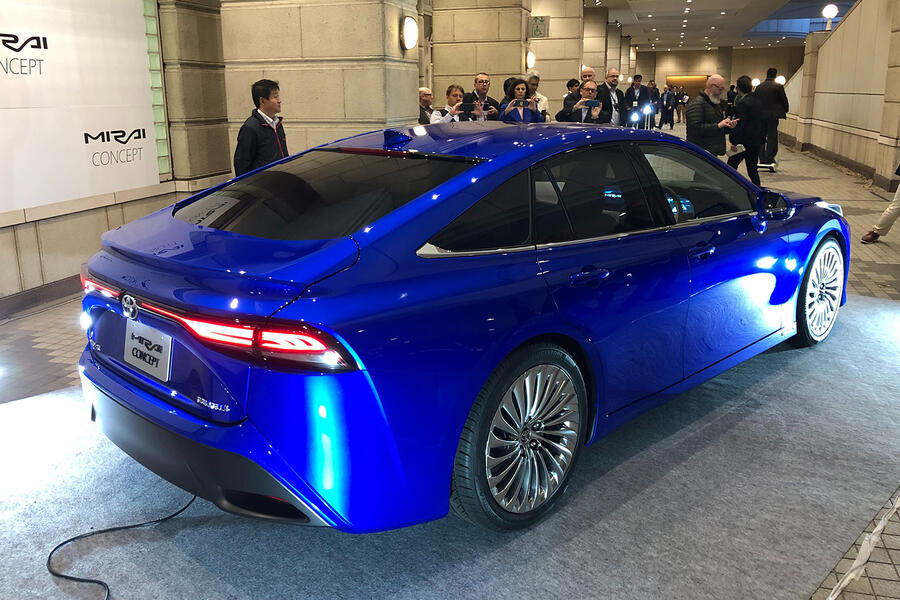
In concept form, the new Mirai measured 4935mm long and 1885mm wide, with a wheelbase of 2920mm. It sits on 20in wheels and retains the four-door saloon layout of the original Mirai, which was launched in 2014. Toyota indicated those dimensions will carry over to the production version.
The interior has also been reworked. It features a 12.3in central touchscreen and a digital instrument display, with many of the controls moved to the centre of the dashboard. Notably, the Mirai now has five seats instead of the original’s four, which, Toyota says, has been enabled by a reworking of the hydrogen fuel cell configuration.
Aside from the claimed increase in range, Toyota has not given specific details of development work done on the fuel cell powertrain. But it says the system, including the fuel cell stack, has been entirely redesigned and offers increased hydrogen storage. It also claims the work on the system ensures a smoother, more linear response, along with improved handling.
READ MORE
Autocar road test: Toyota Mirai fuel cell vehicle
Hydrogen cars explained: the technology targeting a fuel-cell future

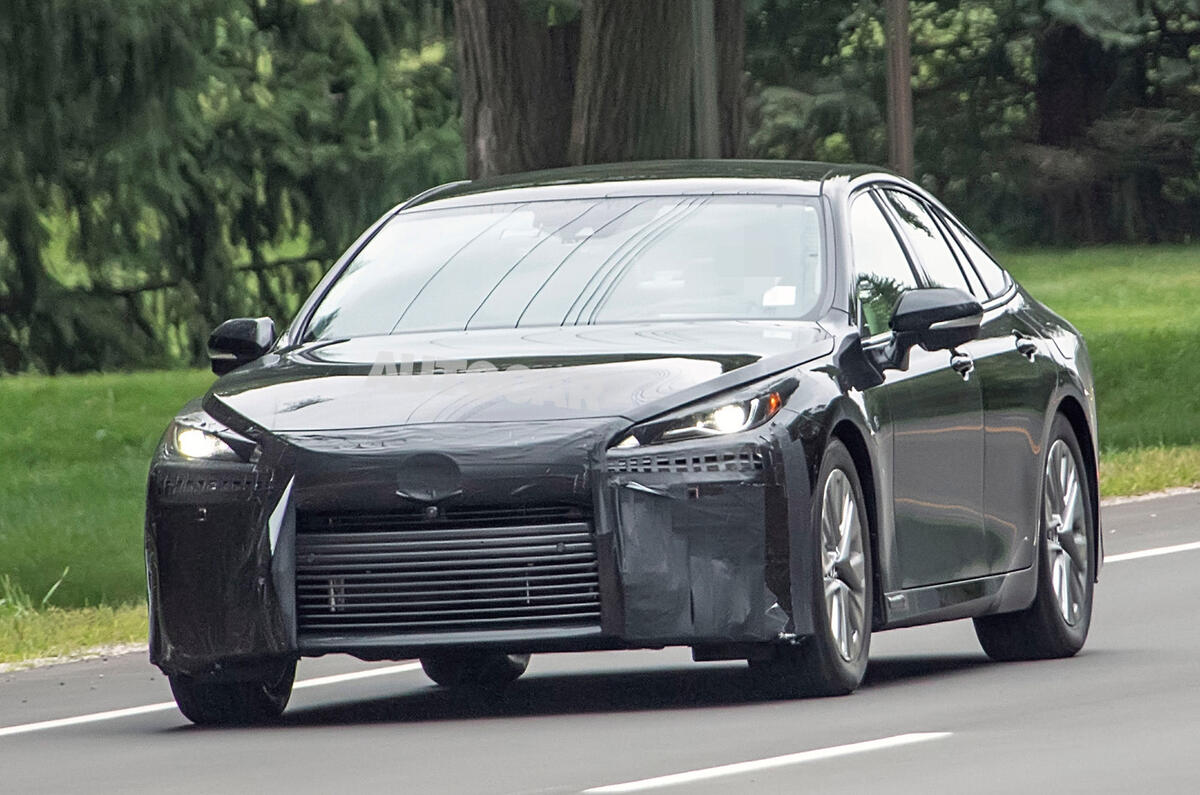
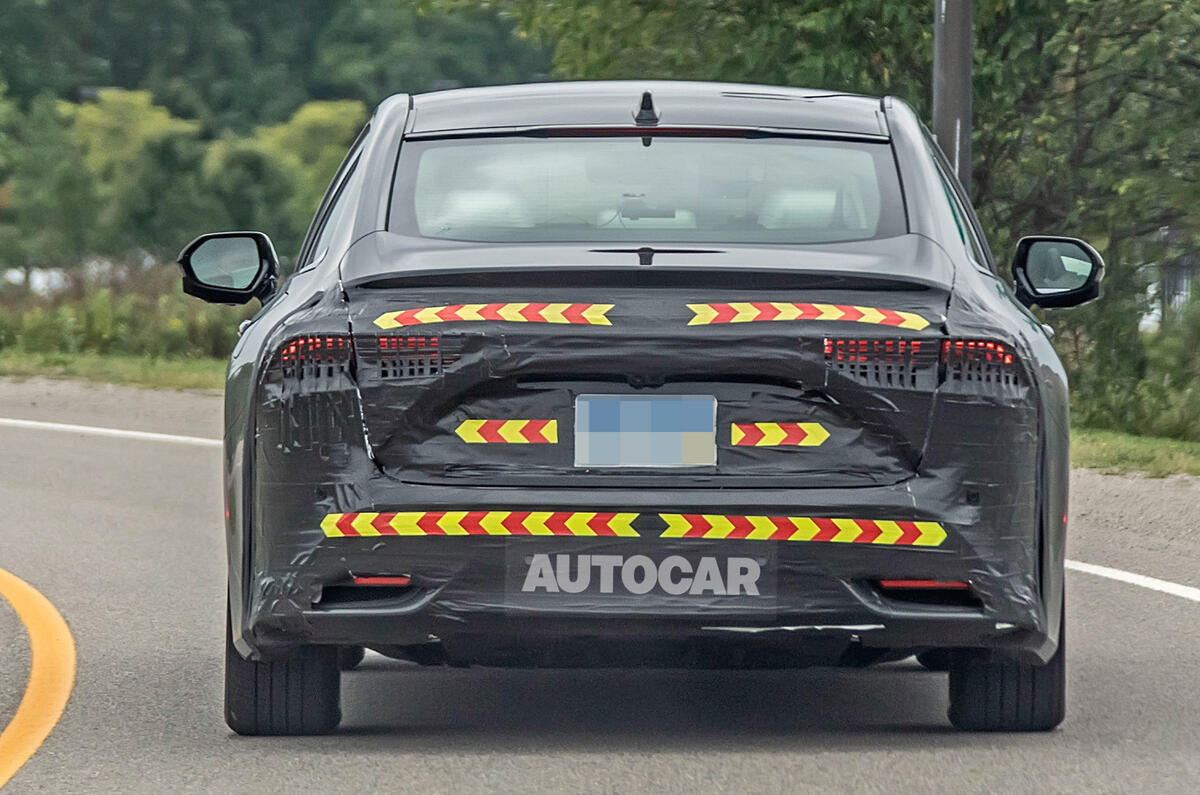
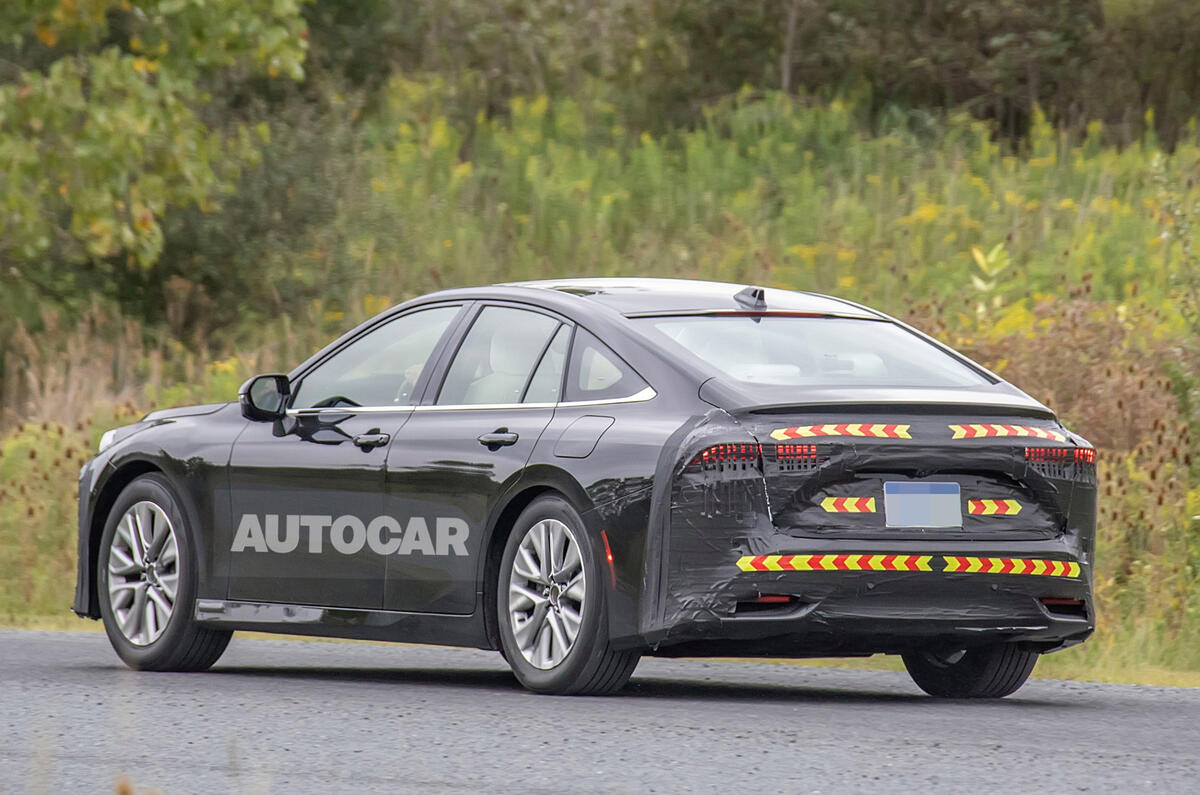

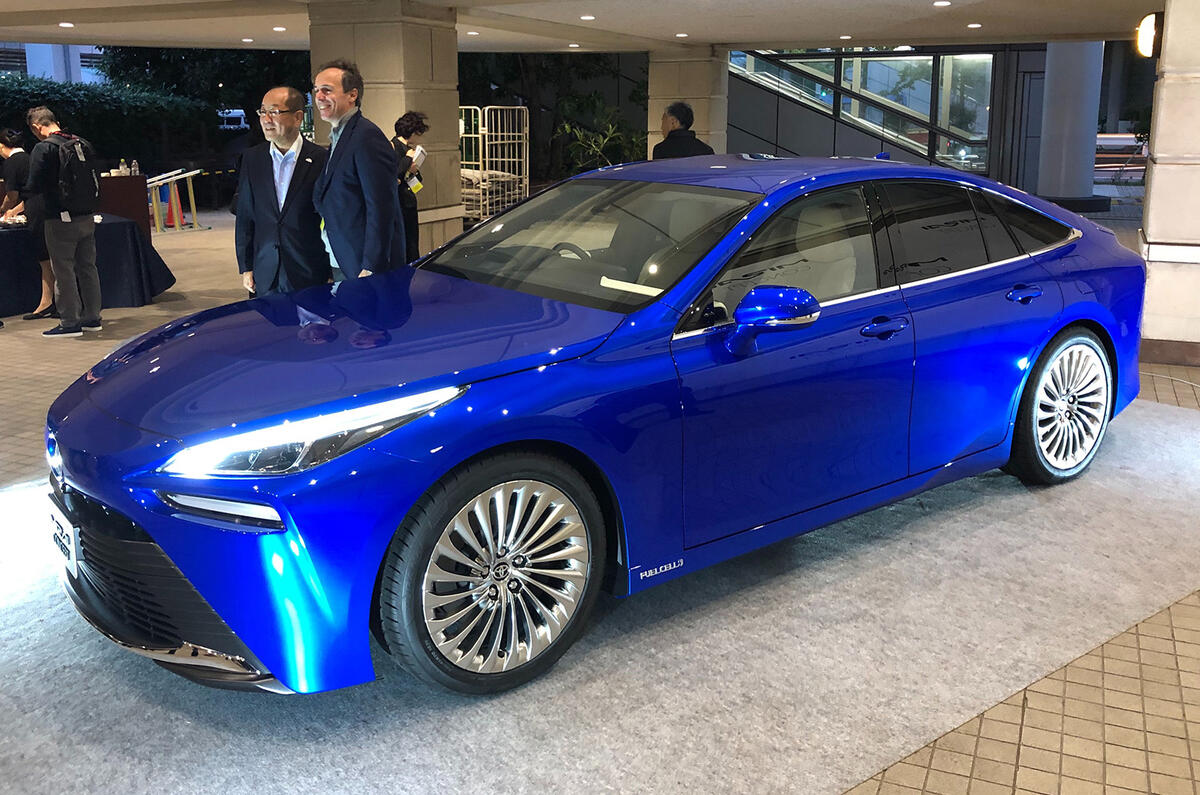
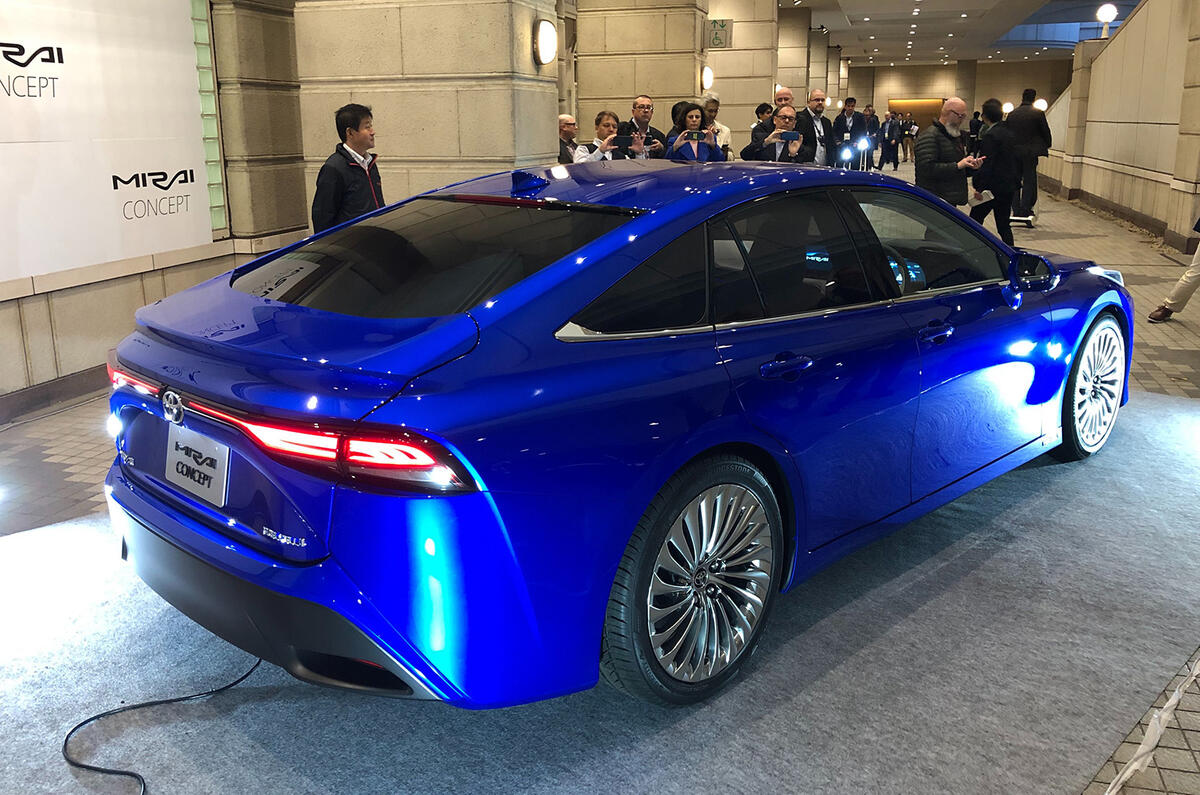
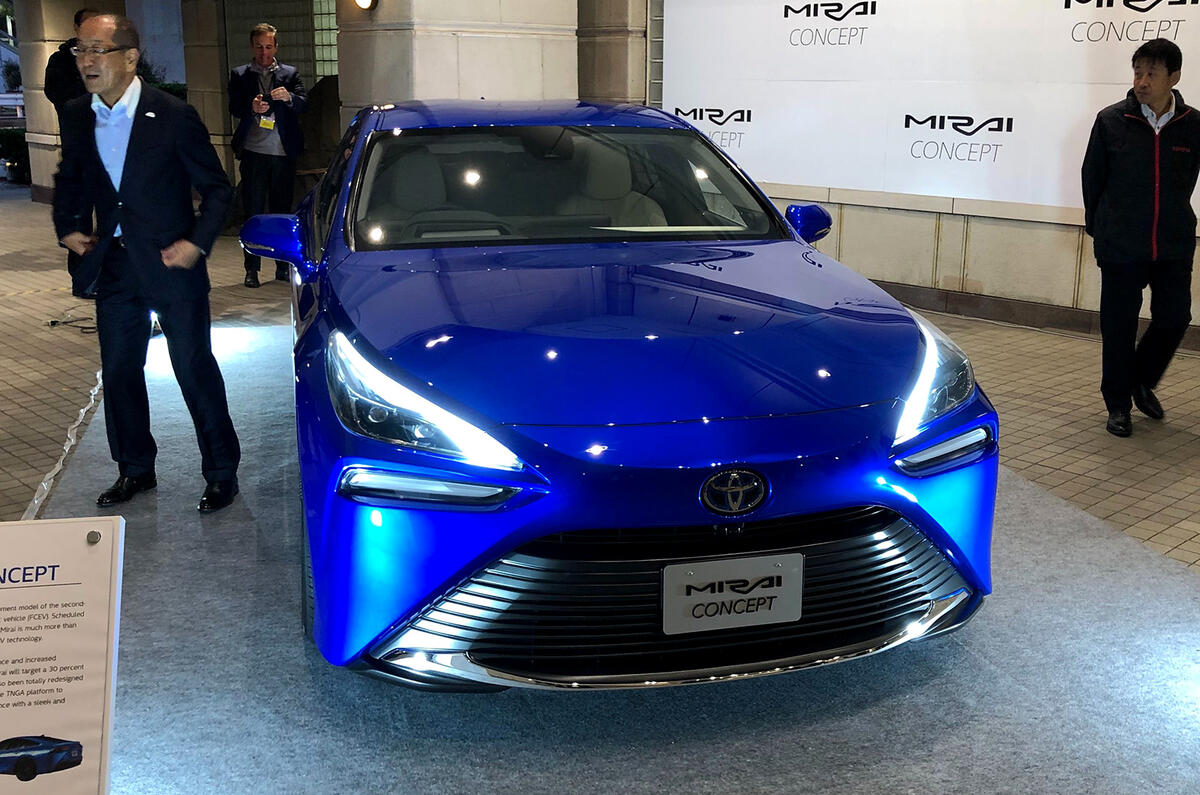
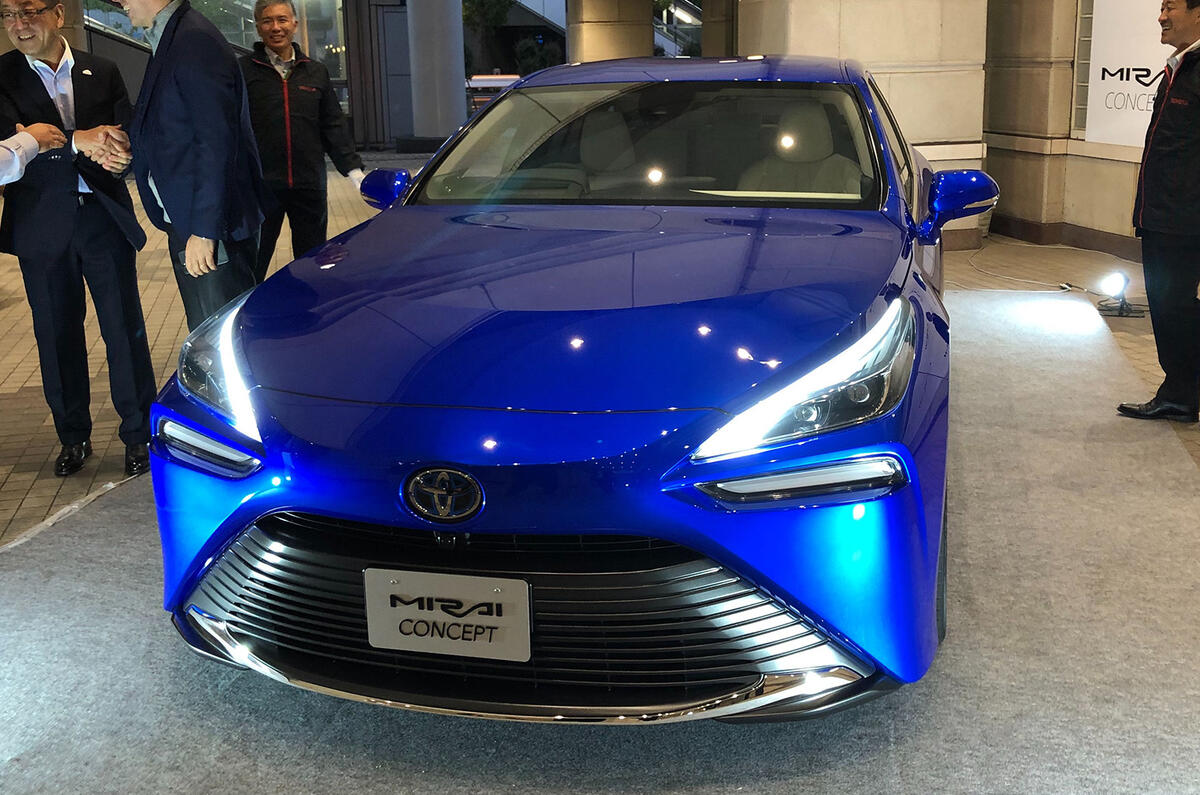
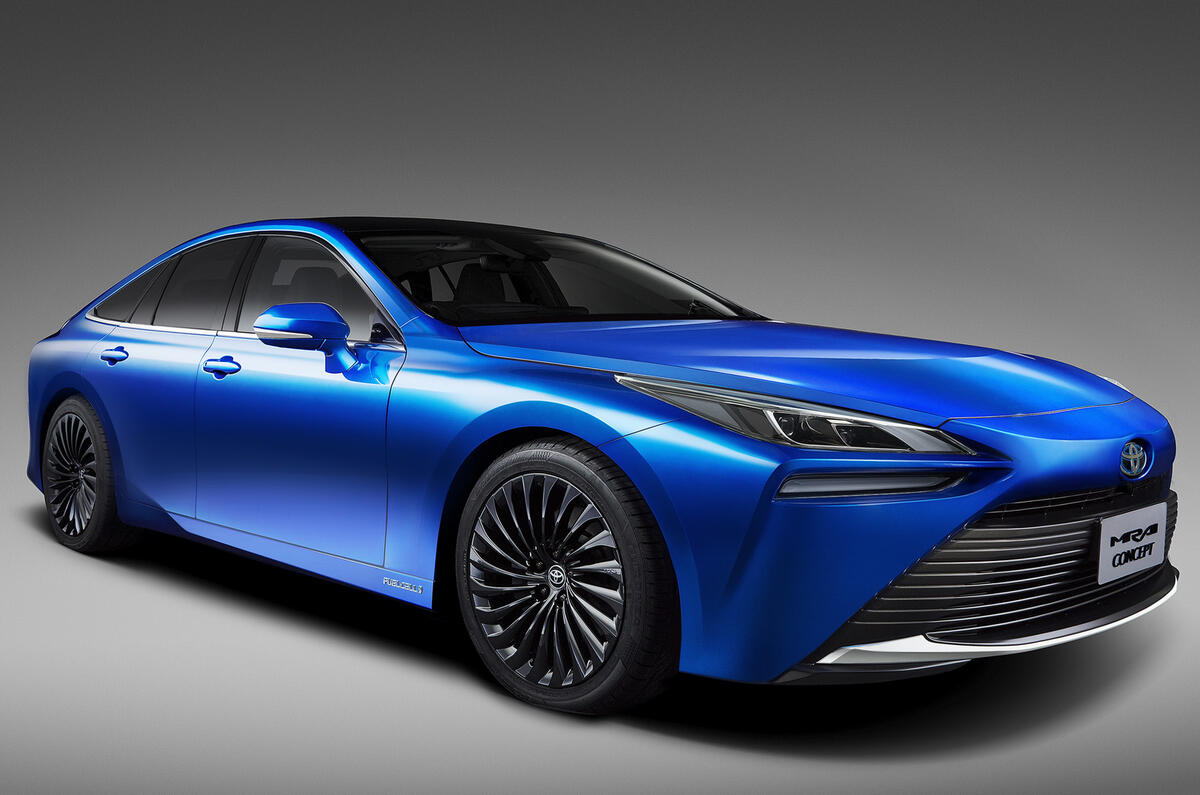
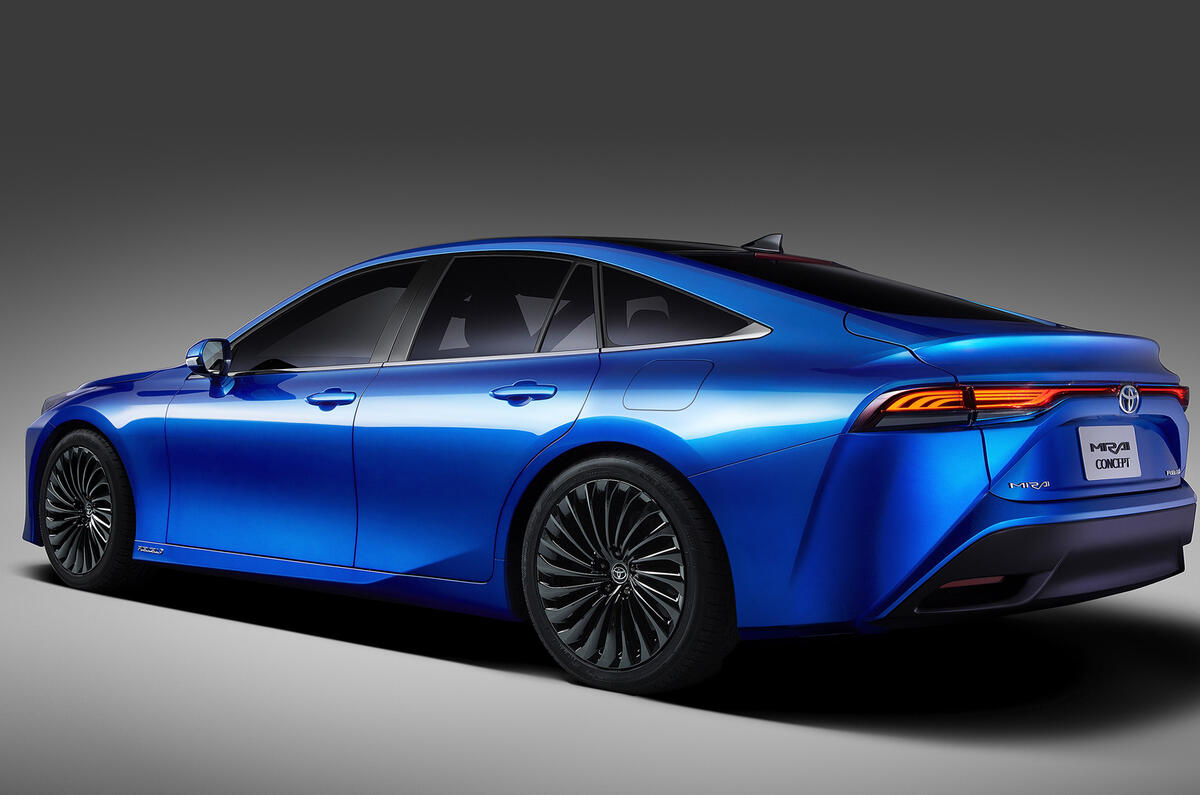
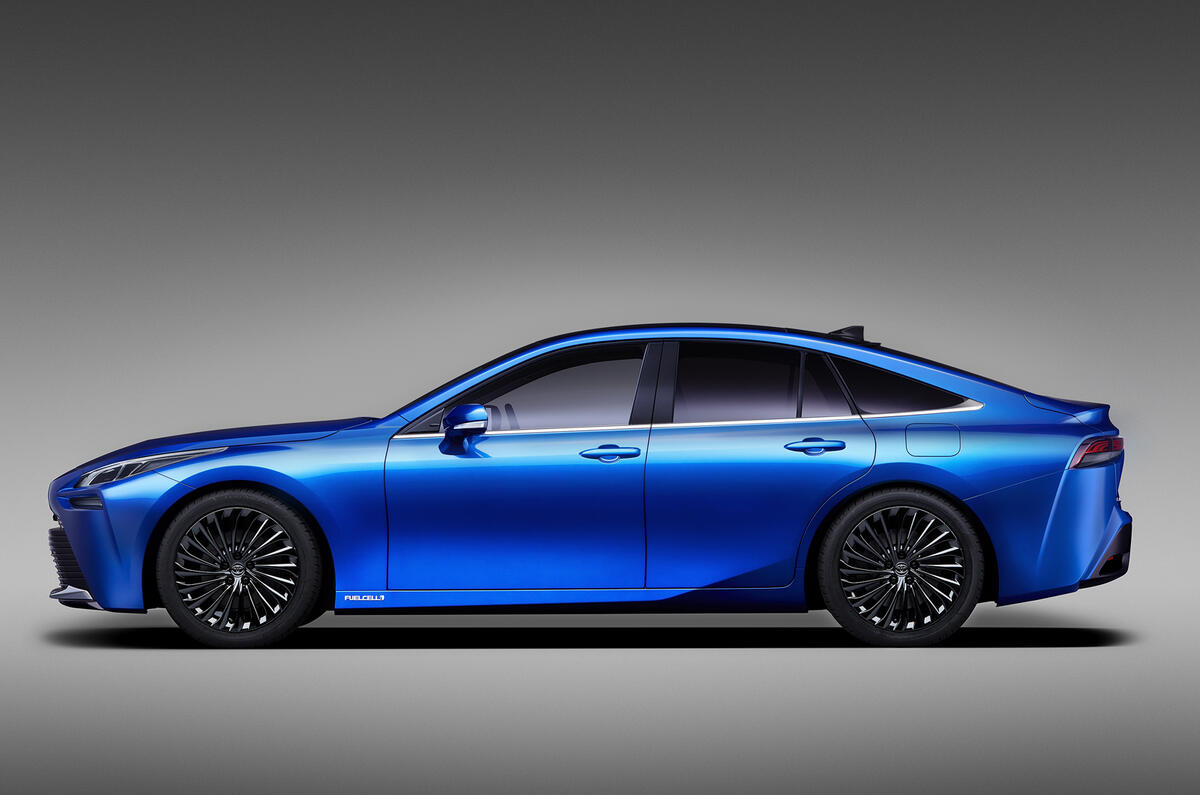

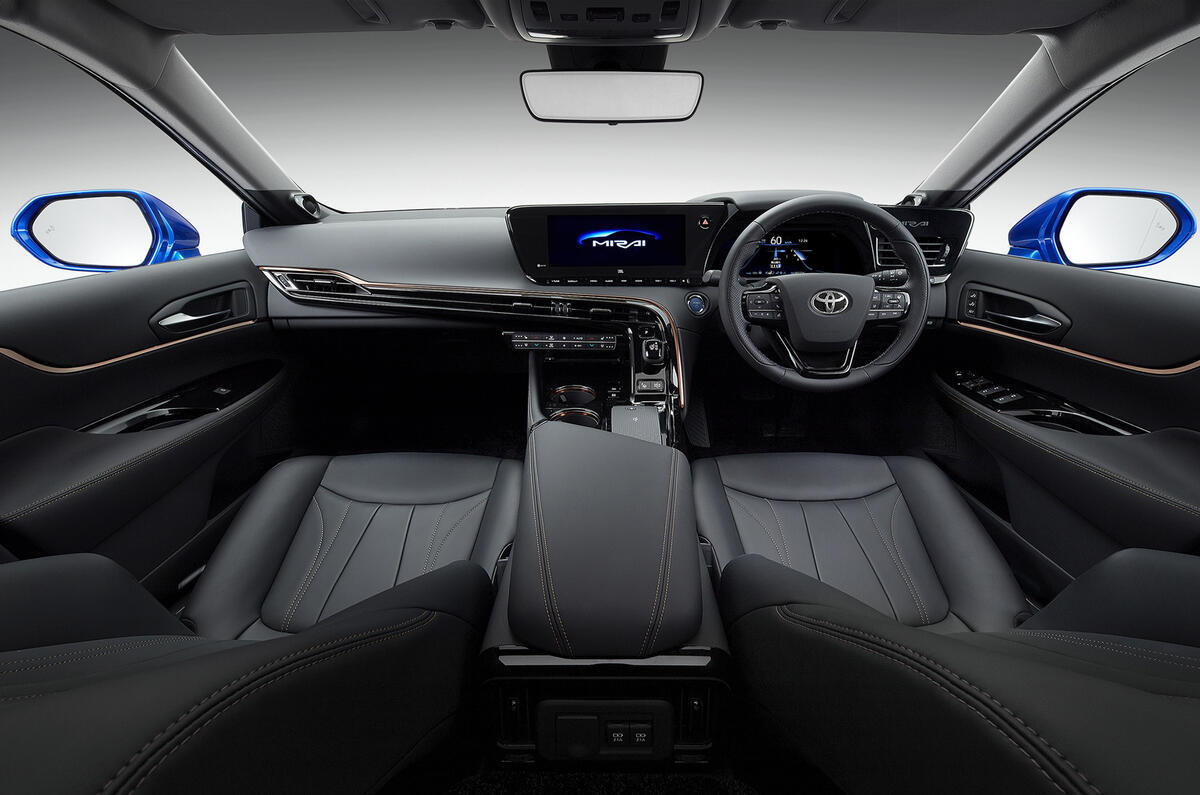
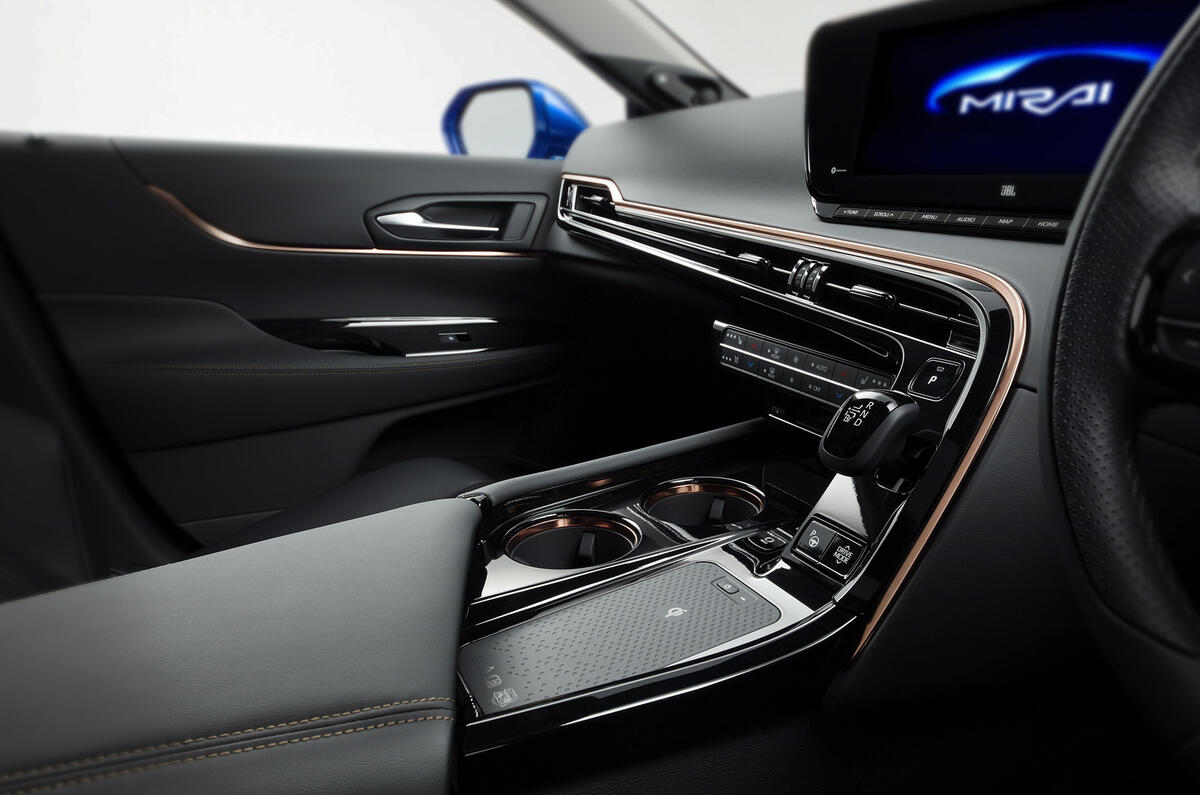
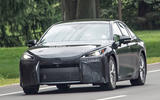
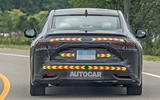
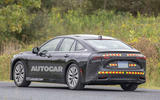
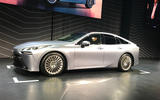
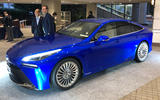
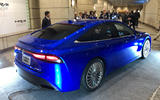
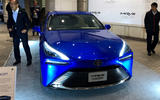
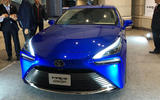
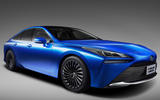
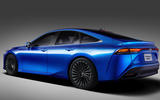
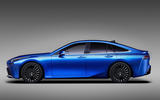

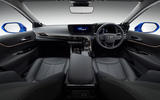
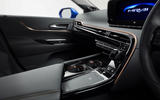






Join the debate
Add your comment
Camry
This looks a bit like the new Camry.
I saw a 70 plate Camry on UK roads yesterday. The Camry isn't even listed on the Toyota UK website!
Camry is there
I tell a lie, it is there if you look in the Cars only section.
A shame...
I was in a Tesla over the weekend, and wasn't sold on the battery car - I drive 25000 miles a year, and couldn't cope with the constant charging. And it would be constant - my friend is so averaging 160 per charge, way short of the claimed range.
A bit more development of the hydrogen filling station structure, and we could swap easily into this format using current fuel stations. With the only output being water, what's not to like?
Lovema75 wrote:
I'm not sure how your friend is driving, I get 150 miles in my i3 (in winter!) and it has a third less energy capacity than even an entry-level Model 3. The latter car can also charge 100 miles' range in 12 minutes when you're away from home. When you're at home, you just plug it in when you arrive and don't think about it.
It's also worth bearing in mind that a Long-range Tesla has a similar range to the (current) Mirai and Clarity, so you're not going to be any less worried in an FCV for the foreseeable future. (Particularly given that you can't refuel on your driveway, at work or while shopping.)
Addendum to last post
Forgot to address that last part. Water is the only emission from the vehicle, but like electric cars, there are emissions further up the fuel chain. Hydrogen molecules are generally attached to something, and it takes a lot of energy to separate them.
The primary way of gaining hydrogen fuel is steam methane reforming (SMR). Putting it very simply, methane goes in, heat is applied, carbon and hydrogen come out. If you run a Mirai at 66 miles per kilogram of SMR-derived hydrogen, the CO2 byproduct is roughly equal to running a diesel at 86 MPG.
If you run an electric car on the average British grid mix, getting 3.3 miles per kWh, the CO2 byproduct is roughly equal to running a diesel at 203 MPG.
SMR comprises around 95% of hydrogen fuel production, but you can also get it by electrolysing water. In theory this can allow zero-carbon hydrogen, if the energy used for electrolysis comes from renewables or nuclear. However, it uses three times as much electricity as charging an electric car.
Before I sound too down on hydrogen - it is still more beneficial than petrol or diesel. There's usually some CO2 saving, and like EVs there's no local pollution, which is very important for cutting lung disease, heart disease and developmental problems in children. It's not the most beneficial solution, but if you're thinking of ditching your combustion engine, don't let me bully you out of it, it's still the right thing to do.
----
Regarding the infrastructure, it's not actually easy to swap current fuel stations to hydrogen. Aside from the land itself, the only thing the fuel types share is the payment kiosk (though even then, most H2 stations are autonomous right now). You need storage and filling equipment that can resist embrittlement, chill to -30C, pressurise to 700bar, prevent and monitor for microscopic leaks, and hold a far less volumetrically dense fuel. Ideally it also needs to be kept some way away from the oil products. And if you're generating the hydrogen with on-site electrolysis, you'll need a much beefier transformer to serve a significant number of cars.
So there's negligible saving by using an existing fuel station; it may cost more if you have to get rid of the existing equipment or expand the site. I've yet to hear of a major 700bar H2 station which cost less than seven figures to install.
(On the other hand, some petrol stations have started installing rapid chargers, costing £30-500k depending on how many units and how fast they are.)
----
And finishing on a positive note... it's a smart idea to make the Mirai look a bit more sleek and sporting, given that it's supposed to be a halo car for the entire fuel type. Probably should have done that in the first place, but I think I know where they got the idea from.
Very informed comment re:
Very informed comment re: hydrogen filling stations, thanks @vertigo. I am sceptical about hydrogen fuelled cars but excited about hydrogen fuelled planes. I hope Toyotas work helps to clean up aviation, which is an awful polluter.
Not selling for a reason, despite the give aways
The tech has been developed for many years and can't progress much further because the generation of hydrogen to electricity is faily efficent, but well-to-well it's no where near as efficient as a BEV in just about every way.
A BEV might only do 200 miles between charges but you always near a plug, good luck finding another Hydrogen station if you choosen one is closed for the day.
"What's not to like"
Expensive to buy, incredibiliy inefficient compared to a BEV, expensive to run and service, short life span of cells and tanks, heavy, space inefficient, slow, range anxiety....
More toned down Lexus than Toyota
Seems more Lexus like in its styling inside and out rather than a Toyota, albeit without the very sharp creases of Lexus' current exteriors.